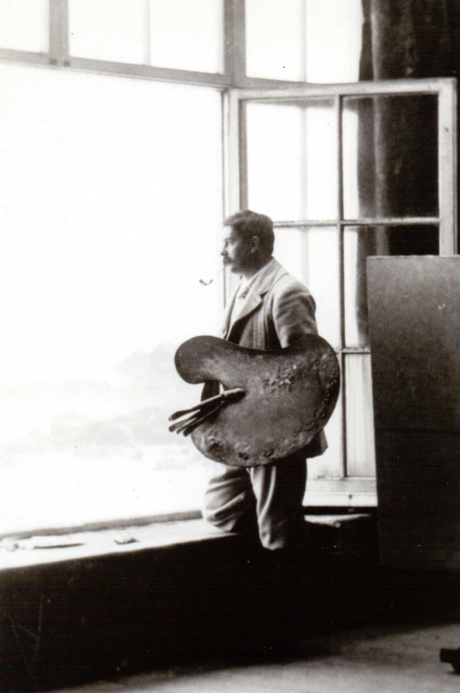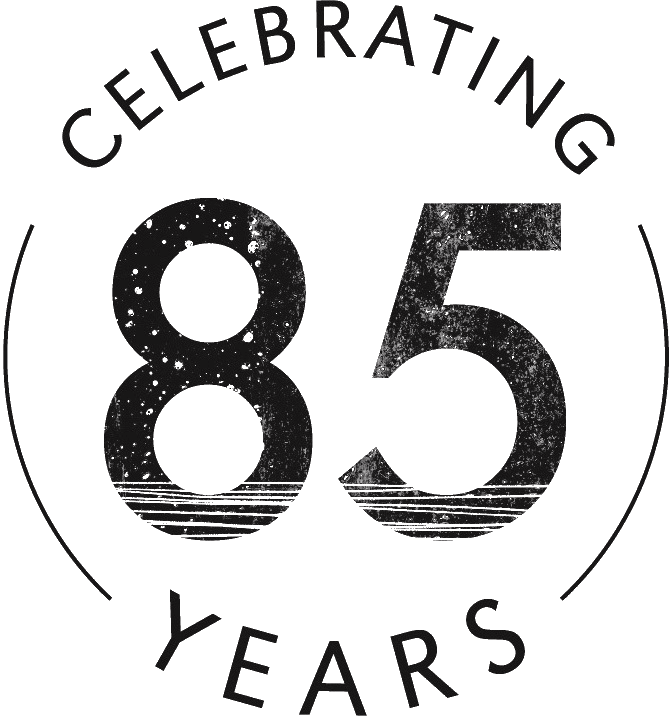1880s to 1920 | The Beginning of an Art Colony
Since the end of the nineteenth century, the clarity of light unique to St Ives and the romantic coastal scenery with its gigantic seas, rugged cliffs and wild moorland has seduced artists from around the world. The town itself, with its picturesque harbour and charismatic fisher folk, offered a wealth of subject material.
Visiting in 1811 and again in 1813, J M W Turner was among the earliest artists to spend time in St Ives, making a panoramic sketch of the town, harbour and coast.
As painting in the open air became increasingly popular during the second half of the nineteenth century, artists started to travel to rural areas throughout Europe and set up colonies. St Ives’ reputation as an ideal place for the marine painter soon grew: its geographical position – far south and far west – meant a good balance of daylight hours and a mild climate, allowing artists to paint outdoors for most of the year.
The arrival of the railway in 1877 made St Ives more accessible and meant that paintings could be transported back to exhibitions in London; the town became a more practical place for artists to take residence. Over the following years, whole carriages would be hired as artists sent their paintings to the Royal Academy summer exhibition and other annual exhibitions across the continent.

By the 1880s, the pilchard industry was in decline and the net lofts and workshops of the fishermen became vacant. Artists arriving in St Ives soon started to convert them into studios; the first record of a studio dates back to 1885 when the Right Honourable Duff Tollemach moved into an old sail loft in Carncows Street, Downalong. Studios located near Porthmeor provided a rare opportunity to study rough seas from the comfort of inside, while studios facing the harbour allowed artists to observe uninterrupted views of the fishermen and harbour life.
The majority of the artists arriving in St Ives were educated and middle-class, many well connected to prominent artists teaching in London institutions. In the winter of 1883/4 Whistler arrived with his two students, English impressionist Walter Sickert and Australian-born painter Mortimer Mempes, to prepare a series of pictures for an exhibition on Bond Street. Mempes later wrote, ‘Whistler himself loved St Ives: the boats, the sea, the fishermen – all fascinated him … St Ives he revelled in … he did much good work there.’ In 1887 Swedish artist Anders Zorn visited the town and today his painting of St Ives harbour in twilight, hangs in the Louvre.
In 1887, James Lanham – a merchant who sold artists materials – opened the first gallery in his store and in the following year the first school of painting was opened in the Porthmeor Studios by Louis Greer and Julius Olsson, both prominent figures among the early artists. Olsson would soon become the leading seascape painter of his generation and the School would attract students from all over the world who came to study marine painting.
In 1890 the St Ives Art Club was founded by Louis Greer. The club gained a worldwide reputation and provided a social centre for an arts community which included musicians and writers as well as artists.
During the following decade St Ives evolved into a thriving artists’ colony and the town become increasingly cosmopolitan with artists from countries such as France, Finland, New Zealand and the United States visiting regularly.
